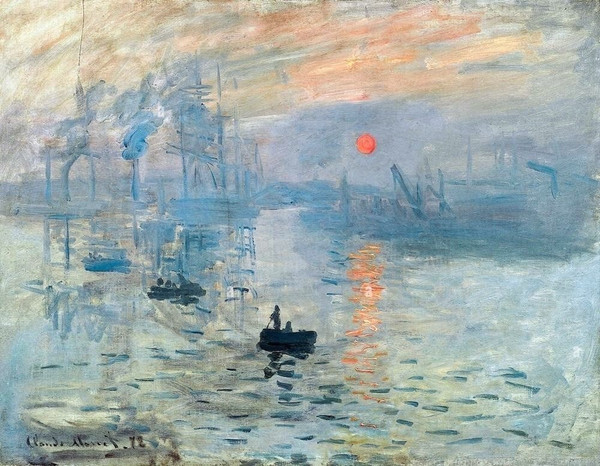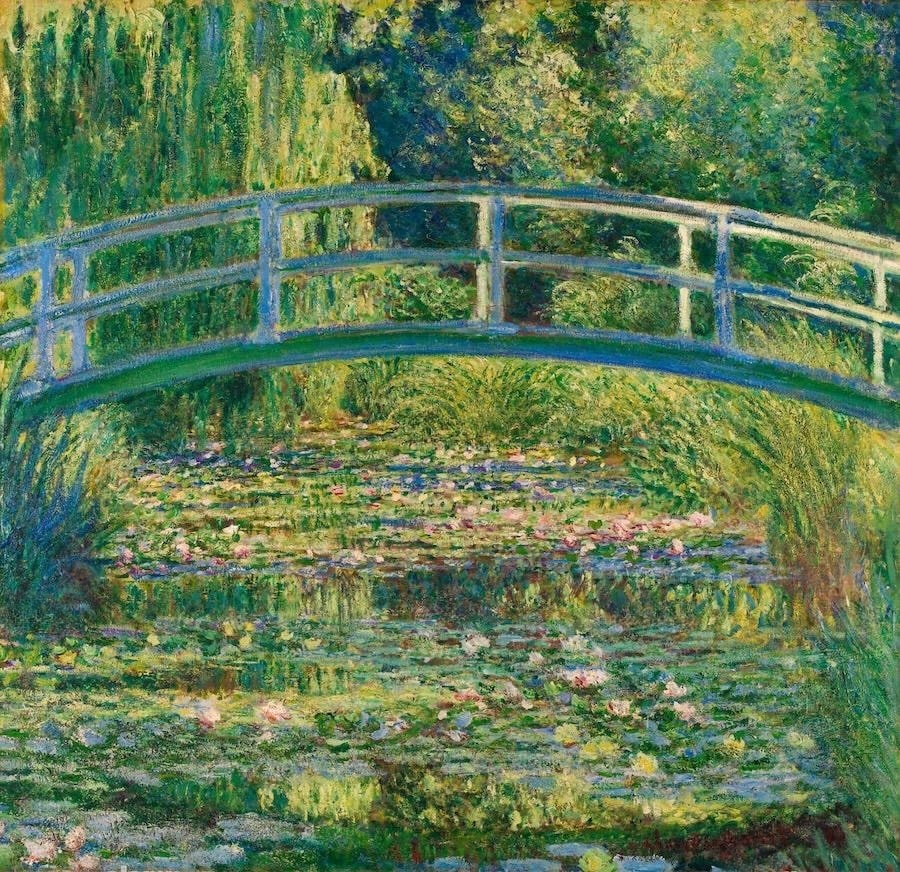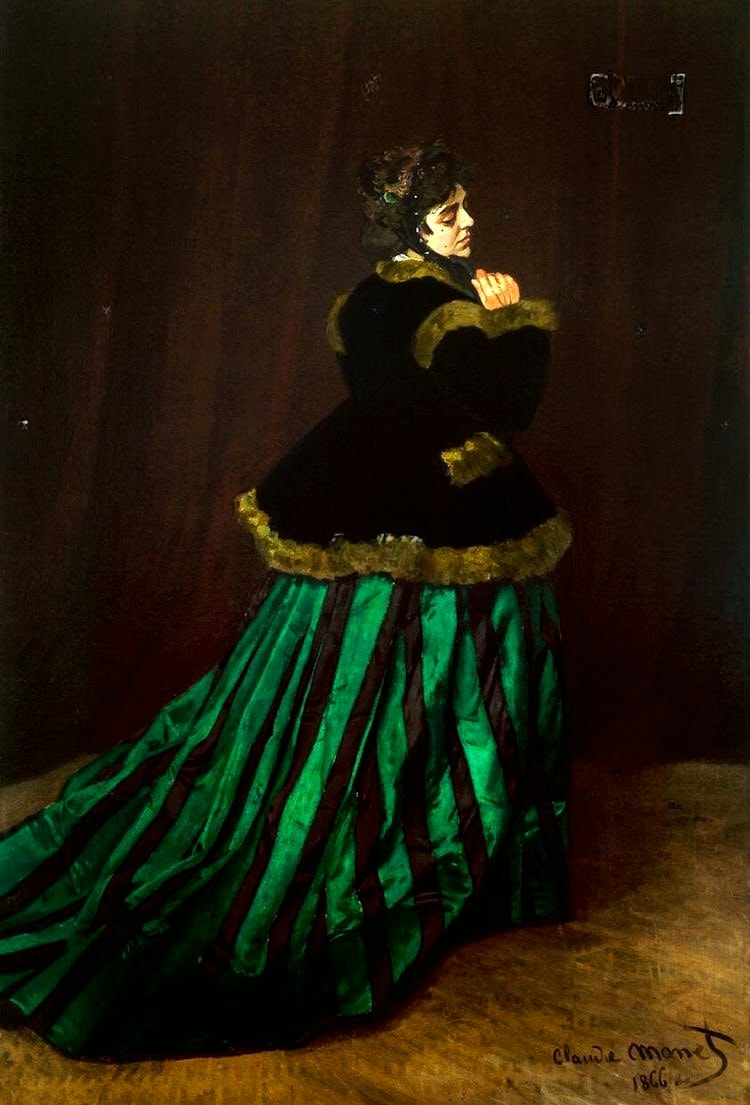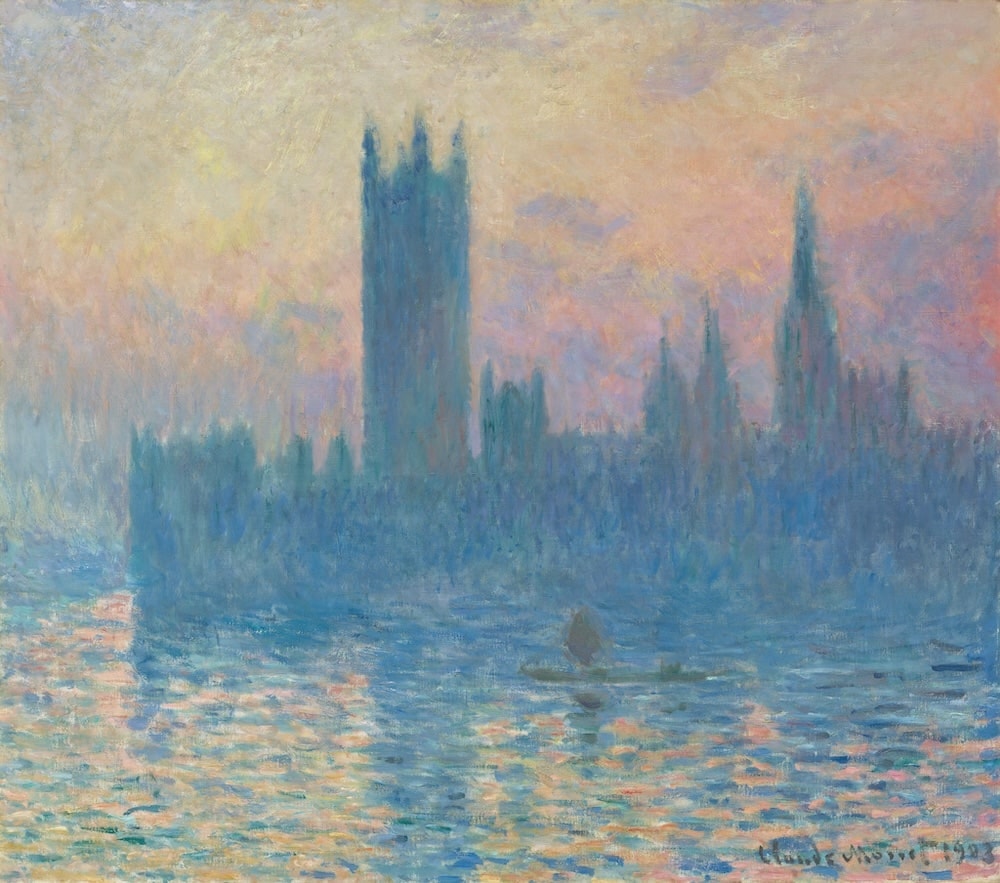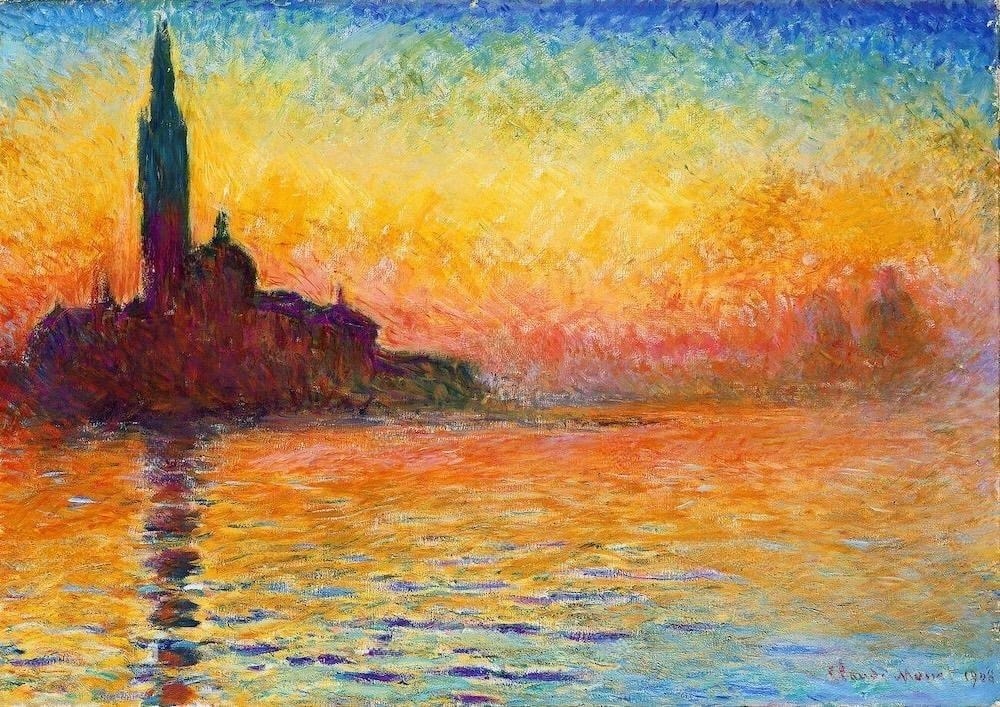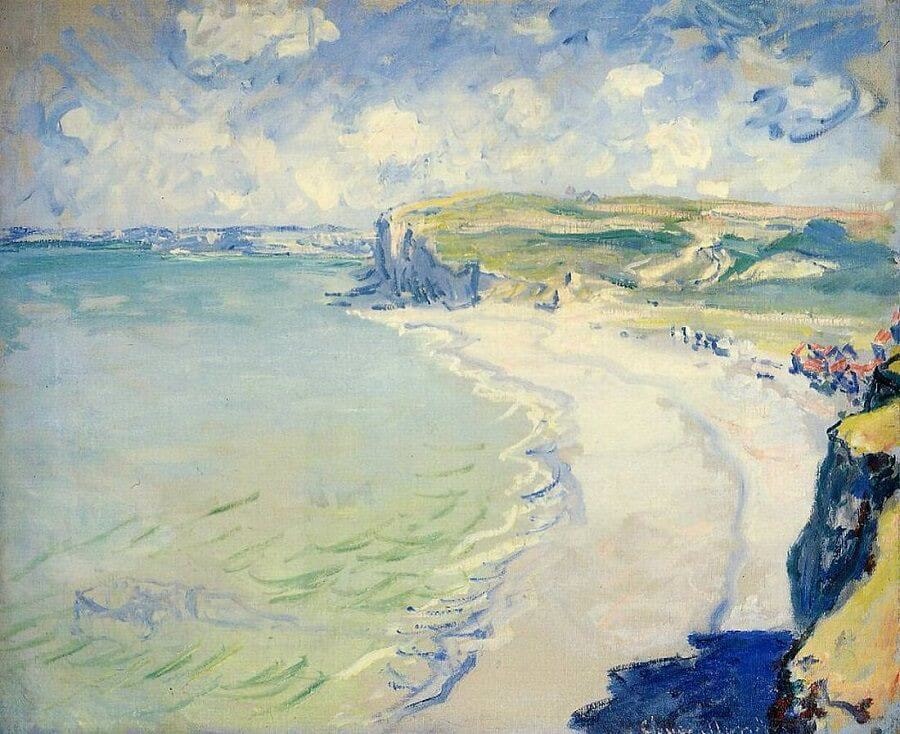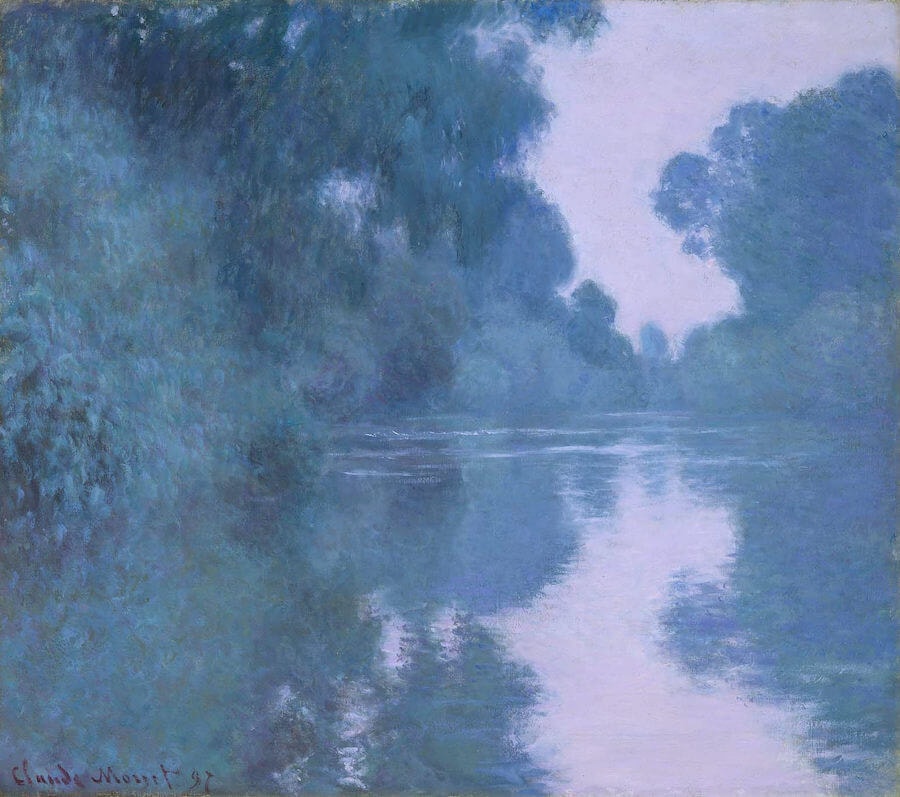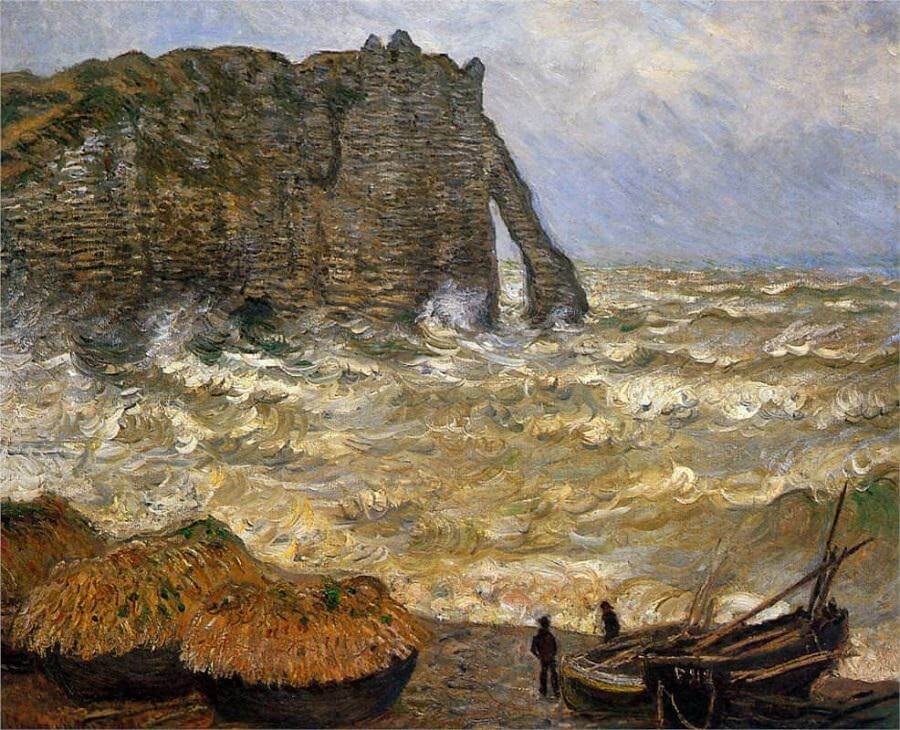14 Most Famous Monet Paintings and Their Impact on Art
Posted by MintSuper Art on 13th Jan 2025
Claude Monet, the father of Impressionism, transformed the art world with his innovative approach to light, color, and nature. His work broke away from traditional styles, focusing on the beauty of everyday life and the changing effects of light. His bold brushstrokes and vibrant palettes gave rise to a new era in art, inspiring generations of artists to follow.
Today, his paintings remain iconic because they capture fleeting moments in nature with unparalleled emotion and skill. From serene water lilies to bustling urban scenes, Monet’s masterpieces invite viewers to experience the world through his eyes. This article explores 14 of the most famous Monet paintings and their lasting impact on art history.
Claude Monet's Famous Paintings and Their Stories
Claude Monet was born in Paris in 1840 but spent much of his childhood in Le Havre, a coastal town in Normandy. Surrounded by natural beauty, he developed a deep love for landscapes at an early age. His family supported his interest in drawing, and by the time he was a teenager, he was already creating charcoal caricatures that gained local attention.
Monet’s exposure to art blossomed when he met local artist Eugène Boudin, who introduced him to outdoor painting, or en plein air. This practice of painting in natural light became the foundation of Monet’s work, allowing him to capture the ever-changing beauty of the world around him.
Monet’s Artistic Journey
Monet’s journey as an artist was not always smooth. He struggled with financial difficulties early on, but his determination never wavered. In 1874, his painting Impression, Sunrise debuted, giving birth to the Impressionist movement. Critics at the time were harsh, but Monet and his peers pushed forward, redefining the boundaries of art with their focus on light, movement, and atmosphere.
Monet’s travels across France and Europe exposed him to diverse landscapes that he immortalized in his work. From the tranquil waters of Giverny to the bustling streets of Paris and the rugged cliffs of Normandy, each painting told a story of the world through his eyes.
Monet’s Legacy
Monet’s legacy lies in his ability to see beauty in the ordinary. His paintings, such as the serene Water Lilies series and the dramatic Rouen Cathedral series, continue to captivate art lovers worldwide. His innovative techniques, like using short, visible brushstrokes and layering colors, changed how artists approached their craft.
Even today, Monet’s famous paintings remain timeless treasures, reminding us of the power of art to capture life’s fleeting moments. His work has not only inspired countless artists but also solidified his place as one of the most influential figures in art history.
1. Impression, Sunrise (1872)
- Year Created: 1872
- Medium: Oil on canvas
- Dimensions: 19 inches x 25 inches (48 cm x 63 cm)
- Location: Musée Marmottan Monet, Paris, France
Description of the Painting
Impression, Sunrise portrays the port of Le Havre during dawn, with the sun casting a soft orange glow on the water. The painting features loose brushstrokes, blending the sky and sea in harmonious hues of blue and orange. Small boats and faint industrial elements add depth to the scene.
Significance and Impact
This painting inspired the name of the Impressionist movement when a critic used the term "Impression" to mock its unfinished look. He focus on light, atmosphere, and fleeting moments marked a revolutionary shift in art. It remains one of the most famous Monet paintings, symbolizing the dawn of modern art and a bold departure from traditional styles.
2. The Water Lily Pond (1899)
- Year Created: 1899
- Medium: Oil on canvas
- Dimensions: 35 inches x 29 inches (90 cm x 74 cm)
- Location: The Metropolitan Museum of Art, New York
The Water Lily Pond showcases a tranquil scene of Monet’s Japanese-style bridge arching over a pond filled with blooming water lilies. The vibrant greens of the surrounding foliage blend with the soft blues and pinks of the water, creating a dreamy, reflective atmosphere. Monet’s use of color and light brings life to the serene landscape, inviting viewers to pause and take in the beauty of nature.
This painting is part of Monet’s iconic Water Lilies series, which includes over 250 works painted between 1897 and 1926. Some of the most famous pieces in the series include Water Lilies and Japanese Bridge and Reflections of Clouds on the Water-Lily Pond. Each painting captures different moods and times of day, highlighting Monet’s obsession with light and its effects on water.
Giverny, Monet’s home for more than 40 years, played a crucial role in the creation of this series. Monet designed and cultivated the garden himself, including the water lily pond and Japanese bridge. The garden became his sanctuary and his greatest source of inspiration. Through his paintings, Monet immortalized the natural beauty of Giverny, turning it into a timeless symbol of the Impressionist movement.
3. The Haystacks (1891)
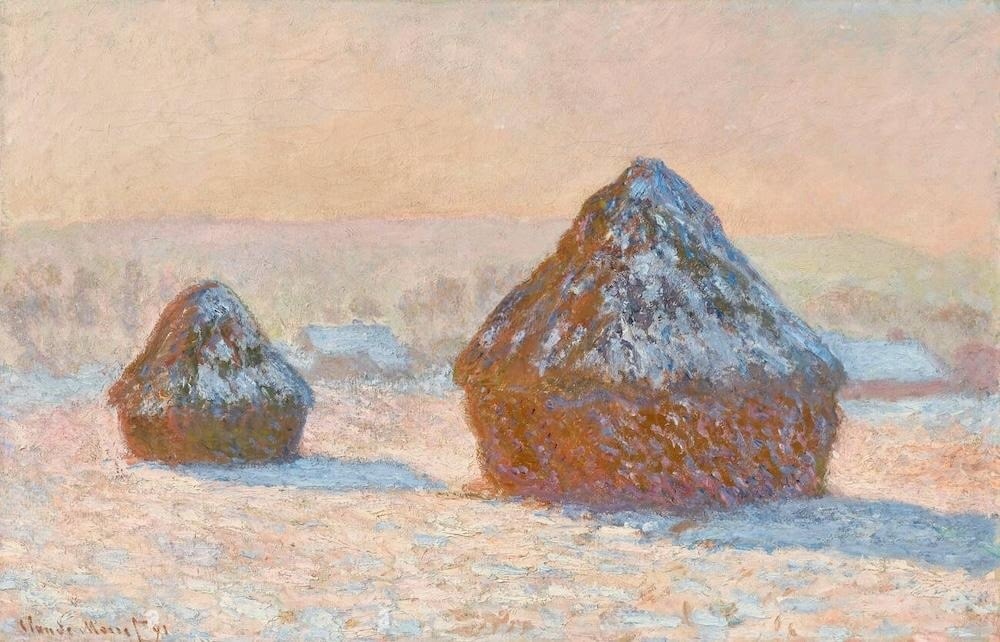
- Year Created: 1891
- Medium: Oil on canvas
- Dimensions: Vary across the series; typically around 28 inches x 36 inches (71 cm x 92 cm)
- Location: Multiple locations, including The Art Institute of Chicago and The Musée d'Orsay in Paris
Description of the Painting
The Haystacks series features stacks of harvested wheat painted at different times of the day, across varying seasons, and under shifting light conditions. Monet explored the subtle changes in color and atmosphere caused by sunlight, shadows, and weather. From the warm, golden hues of a summer sunset to the cool, misty tones of a winter morning, the series captures the fleeting beauty of nature’s cycles.
Monet’s fascination with nature’s transformations shines through in The Haystacks. He painted these works outdoors, observing how light and color changed as the day progressed or as seasons shifted. His dedication to capturing these ephemeral moments reflected his belief that nature was an ever-changing masterpiece.
Significance and Impact
This series marked a turning point in Monet’s career, demonstrating his ability to combine artistic skill with scientific observation. The Haystacks not only became one of his most famous works but also highlighted his revolutionary approach to Impressionism, focusing on the transient beauty of the natural world.
4. Rouen Cathedral Series (1892 – 1894)
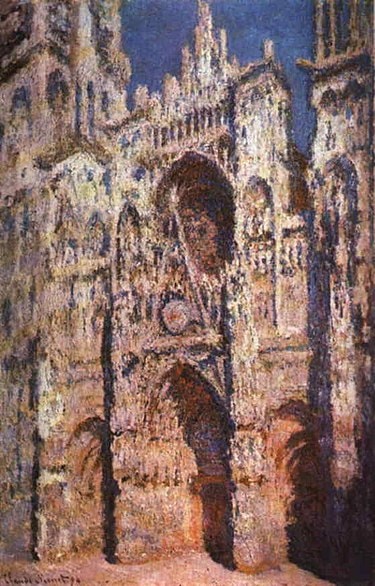
- Year Created: 1892–1894
- Medium: Oil on canvas
- Dimensions: Vary across the series; typically around 39 inches x 26 inches (100 cm x 66 cm)
- Location: Multiple locations, including The Musée d'Orsay in Paris and The National Gallery of Art in Washington, D.C.
Description of the Painting
The Rouen Cathedral Series features over 30 paintings of the cathedral’s façade, captured at different times of the day and in various weather conditions. Each painting showcases intricate details of the Gothic architecture, bathed in dynamic plays of light and color. Monet’s vibrant palette transforms the cathedral’s solid stone into a living, breathing subject.
This series symbolizes Monet’s relentless pursuit of capturing the ephemeral effects of light and shadow. The cathedral serves as a canvas for his exploration of how sunlight, clouds, and time of day influence color and mood. By focusing on the same subject under changing conditions, Monet highlights the transient nature of perception and reality.
Significance and Impact
The Rouen Cathedral Series stands as a testament to Monet’s mastery of Impressionism, proving that even the seemingly static can become a dynamic interplay of light, shadow, and emotion. These paintings remain an enduring example of how Monet elevated ordinary subjects into extraordinary art.
5. Woman with a Parasol – Madame Monet and Her Son (1875)
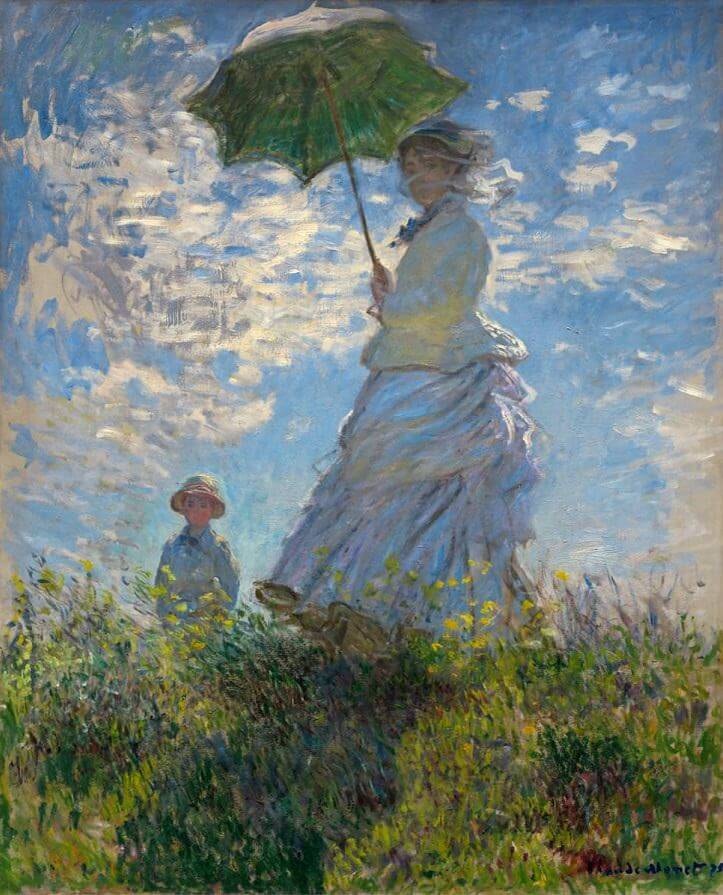
- Year Created: 1875
- Medium: Oil on canvas
- Dimensions: 39 inches x 32 inches (100 cm x 81 cm)
- Location: National Gallery of Art, Washington, D.C.
Description of the Painting
This painting shows Monet’s wife, Camille, and their son, Jean, enjoying a stroll on a windy day. Camille holds a green parasol to shield herself from the sun, while her white dress flows gently in the breeze. The background is filled with soft, natural colors of grass and sky, creating a peaceful and airy atmosphere. Monet’s loose brushstrokes give the painting a sense of movement and light.
Significance and Impact
This artwork is a beautiful example of Monet’s skill in capturing everyday moments with warmth and emotion. The painting reflects his love for his family and his fascination with light and shadow. It also shows how Impressionist artists focused on ordinary scenes rather than formal portraits or historical events.
Woman with a Parasol became one of Monet’s most well-known works, admired for its simplicity and charm. It captures the fleeting beauty of a moment, making it timeless and relatable even today.
6. Camille (The Woman in the Green Dress, 1866)
- Year Created: 1866
- Medium: Oil on canvas
- Dimensions: 91 inches x 59 inches (231 cm x 150 cm)
- Location: Kunsthalle Bremen, Germany
Description of the Painting
This painting shows Camille, Monet’s future wife, wearing a striking green dress with black accents. The dress’s rich folds and textures are painted with great detail, while Camille’s confident pose and direct gaze give her a commanding presence.
Significance and Impact
This portrait was Monet’s first major success, earning him recognition at the Paris Salon. It reflects his love for Camille and his skill in painting fabrics and textures. The painting helped establish Monet’s career and remains one of his most admired works for its elegance and emotional depth.
7. Houses of Parliament (1900-1904)
- Year Created: 1900–1904
- Medium: Oil on canvas
- Dimensions: Vary across the series; typically around 32 inches x 36 inches (81 cm x 92 cm)
- Location: Multiple locations, including The Art Institute of Chicago and The Musée d'Orsay in Paris
Description of the Painting
This series captures the iconic Houses of Parliament in London, painted at different times of the day and in varying weather conditions. Monet used soft, diffused colors to show how fog, sunlight, and shadows changed the appearance of the building and the Thames River. The paintings focus on the effects of light rather than the architectural details.
Significance and Impact
The Houses of Parliament series showcases Monet’s fascination with light and atmosphere. By painting the same subject under different conditions, he revealed how light can transform even a familiar landmark into something magical. These works are celebrated for their dreamy, almost abstract quality and are seen as masterpieces of Impressionism.
8. San Giorgio Maggiore at Dusk (1908)
- Year Created: 1908
- Medium: Oil on canvas
- Dimensions: 29 inches x 36 inches (74 cm x 92 cm)
- Location: National Museum Cardiff, Wales
Description of the Painting
This painting depicts the island of San Giorgio Maggiore in Venice during sunset. Monet used soft, glowing colors like orange, pink, and purple to capture the fading light over the lagoon. The reflections on the water add a peaceful and almost magical feeling to the scene.
Significance and Impact
San Giorgio Maggiore at Dusk is a stunning example of Monet’s ability to capture light and atmosphere. It highlights his travels to Venice and his admiration for the city’s beauty. The painting is celebrated for its dreamy, ethereal quality and remains one of Monet’s most loved works. It reflects his mastery in transforming ordinary scenes into extraordinary art.
9. Poplars Series (1891)
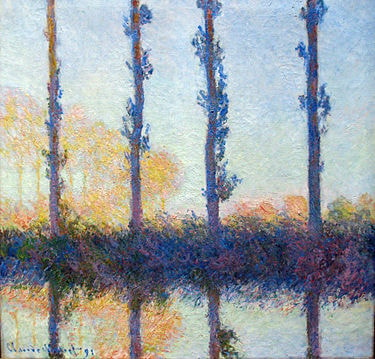
- Year Created: 1891
- Medium: Oil on canvas
- Dimensions: Vary across the series; typically around 36 inches x 28 inches (92 cm x 71 cm)
- Location: Various museums, including The Metropolitan Museum of Art, New York
Description of the Painting
The Poplars Series features tall trees lining a riverbank, painted at different times of the day and seasons. Monet used soft, colorful brushstrokes to show the changes in light and color on the trees and their reflections in the water.
Significance and Impact
This series shows Monet’s love for nature and his focus on light and atmosphere. By painting the same trees under changing conditions, he created a sense of movement and time. The Poplars Series is admired for its beauty and remains a classic example of Impressionism.
10. Beach in Pourville (1882)
- Year Created: 1882
- Medium: Oil on canvas
- Dimensions: 25 inches x 32 inches (65 cm x 80 cm)
- Location: The Hermitage Museum, Saint Petersburg, Russia
Description of the Painting
This painting shows the peaceful shoreline of Pourville, a small village in Normandy. Monet used soft blues, greens, and sandy tones to capture the calm waves and cliffs. The painting reflects the natural beauty of the French coast.
Significance and Impact
Beach in Pourville highlights Monet’s skill in capturing nature’s tranquility. The painting reflects his love for outdoor scenes and his ability to portray light and atmosphere. It remains a cherished work for its simplicity and charm, showing the timeless beauty of coastal landscapes.
11. Morning on the Seine near Giverny (1897)
- Year Created: 1897
- Medium: Oil on canvas
- Dimensions: 32 inches x 36 inches (81 cm x 92 cm)
- Location: Museum of Fine Arts, Boston, USA
Description of the Painting
This painting shows the Seine River near Monet’s home in Giverny during a calm, misty morning. The water reflects the soft light of the sky and the trees on its banks. Monet used delicate colors like pale blues and greens to create a peaceful and quiet scene.
Significance and Impact
Morning on the Seine near Giverny is part of a series where Monet captured the river at different times of the day. The painting shows his love for nature and his talent for portraying light and reflections. It remains a beautiful example of Monet’s skill in creating tranquil, dreamlike landscapes.
12. The Artist’s Garden at Giverny (1900)
- Year Created: 1900
- Medium: Oil on canvas
- Dimensions: 32 inches x 39 inches (81 cm x 100 cm)
- Location: Musée d'Orsay, Paris, France
Description of the Painting
This painting shows Monet’s vibrant garden in Giverny, filled with blooming flowers and lush greenery. The pathway, lined with colorful flowers in shades of pink, yellow, and purple, leads the viewer’s eye through the composition. Monet’s brushstrokes create a sense of movement and life in the garden.
Significance and Impact
The Artist’s Garden at Giverny reflects Monet’s deep connection to his home and his love for nature. The garden was both his sanctuary and his greatest inspiration. This painting captures the beauty of the natural world and Monet’s ability to bring it to life on canvas. It remains a timeless celebration of color, light, and nature’s harmony.
13. Stormy Sea in Étretat (1883)
- Year Created: 1883
- Medium: Oil on canvas
- Dimensions: 25 inches x 32 inches (65 cm x 80 cm)
- Location: Musée d'Orsay, Paris, France
Description of the Painting
This painting captures the dramatic waves crashing against the cliffs of Étretat during a storm. Monet used bold brushstrokes and deep shades of blue, gray, and white to show the power of the sea and the dark, moody sky.
Significance and Impact
Stormy Sea in Étretat reflects Monet’s fascination with nature’s raw energy and changing moods. The painting shows his ability to capture the movement and intensity of the ocean. It is a striking work that highlights the beauty and force of nature, earning its place as one of Monet’s memorable seascapes.
14. The Magpie (1869)
- Year Created: 1869
- Medium: Oil on canvas
- Dimensions: 35 inches x 51 inches (89 cm x 130 cm)
- Location: Musée d'Orsay, Paris, France
Description of the Painting
The Magpie depicts a quiet winter scene with a solitary magpie perched on a wooden gate. The snow-covered landscape is bathed in soft light, with delicate shadows cast across the ground. Monet’s use of subtle tones creates a serene and peaceful atmosphere.
Significance and Impact
This painting is one of Monet’s earliest works to explore the effects of light and shadow on snow. It marked a departure from traditional winter landscapes by focusing on light’s changing colors rather than detailed realism. The Magpie is celebrated for its simplicity and beauty, showcasing Monet’s innovative approach to capturing nature.
Conclusion
Claude Monet’s contribution to art history is unparalleled. As a pioneer of Impressionism, he redefined how light, color, and everyday scenes could be captured on canvas. His ability to bring fleeting moments to life through his bold brushstrokes and innovative techniques has left a lasting impact on the art world. Each of his paintings tells a story, inviting viewers to see the world through his eyes.
Monet’s works remain timeless because they celebrate the beauty of nature and the simple joys of life. Whether it’s the serenity of water lilies, the power of a stormy sea, or the magic of a snowy day, his art continues to inspire and captivate.
If you feel inspired to explore more famous paintings and stunning canvas art for your own space, visit MintSuper Art and discover pieces that can bring the beauty of Monet’s style into your home.

